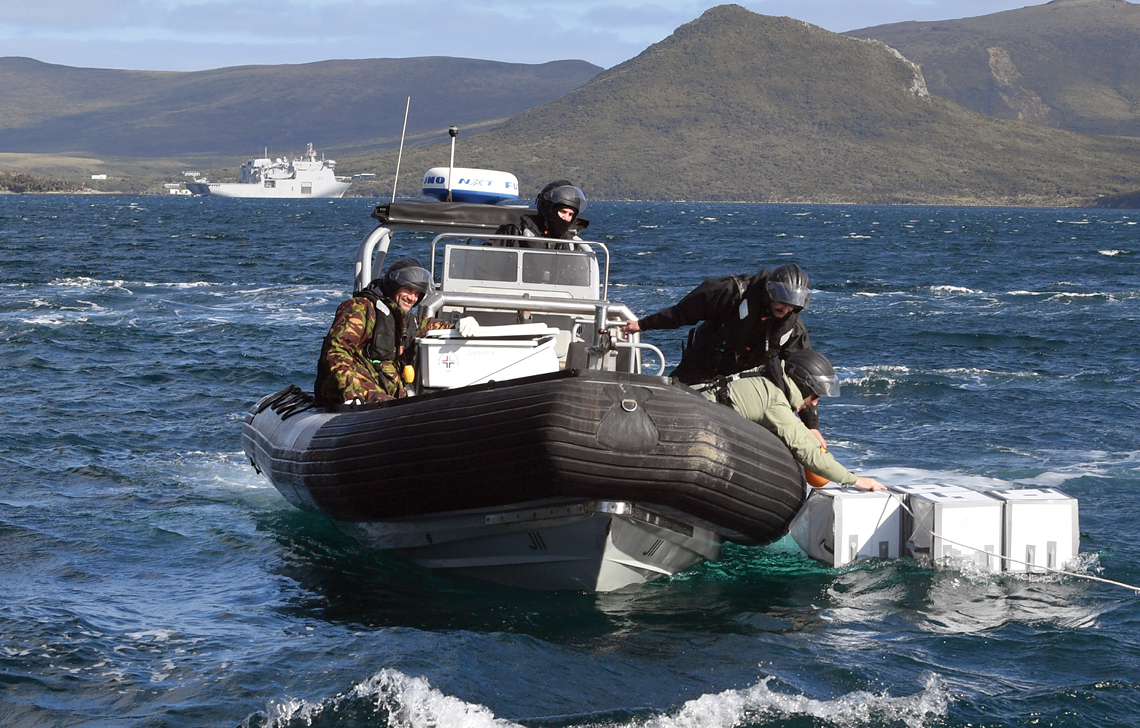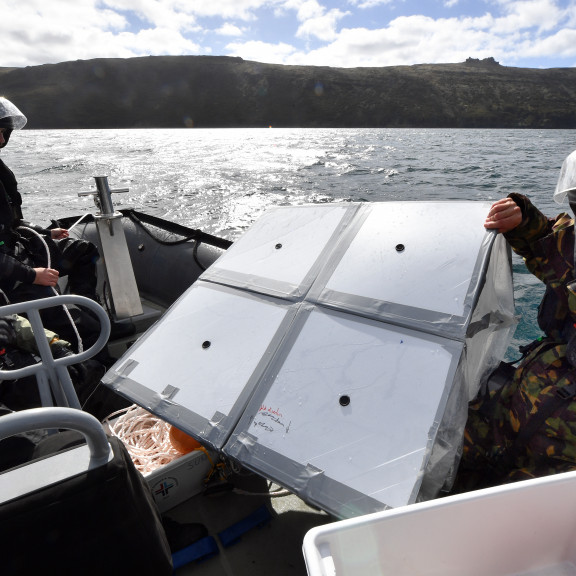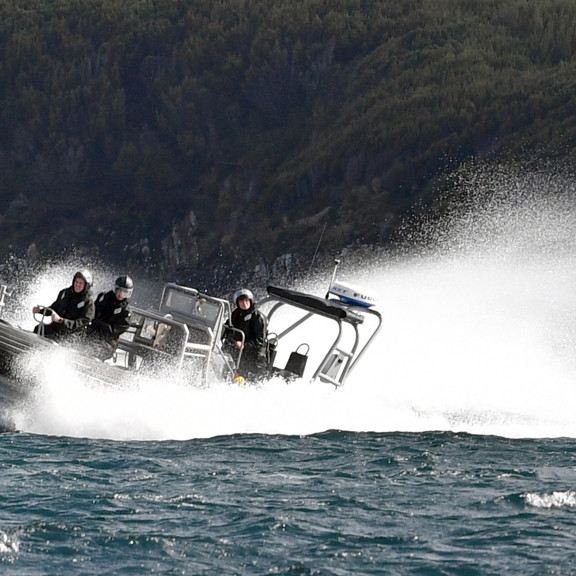
28 MARCH 2025 | OUR SCIENCE
DST and the University of Auckland (UoA) are continuing to test prototype radar reflectors for the Synthetic Aperture Radar for Search and Rescue (SAR4SAR) trial programme. The concept is that a radar reflector deployed by persons or vessels in distress, when detected from space, would aid efficient tasking of search and rescue assets to expedite rescue.
Following the successful completion of land-based trials last year, five reflectors were down-selected for further evaluation. The next phase of the SAR4SAR trial was the first opportunity to deploy the reflectors to the sea surface to test their buoyancy and robustness and conduct a Synthetic Aperture Radar satellite collect. In February 2025, the reflectors were deployed from the UoA’s research vessel Te Kaihopara north of Omaha Beach.
Initial results were promising, and lessons learnt from that activity were used to refine the reflector design for additional sea-based testing as part of HMNZS CANTERBURY’s recent OP ENDURANCE 25 conservation mission to the sub-Antarctic islands of New Zealand.
During the 10-day operation to the Auckland and Campbell Islands, research scientists from DST and the UoA successfully launched test reflectors from RNZN RHIBs. The reflectors successfully popped up into a three-dimensional shape that survived the challenging conditions and was observed by Synthetic Aperture Radar satellites as a bright speck.
The UoA has patented its reflector design, with the aim of developing a stronger version that can be mass-produced for approximately $60. This version would be lightweight enough for easy transport on boats and could help save lives by guiding search and rescue teams to the correct location.
It is not intended to replace personal locator beacons or radios, which continue to play a crucial role in notifying rescue services.
The reflector is currently undergoing testing with various satellites launched from countries worldwide.
While commercially available reflectors are typically used as navigation markers or for target practice, the research team determined that they are not suitable for detection by space-based sensors.


